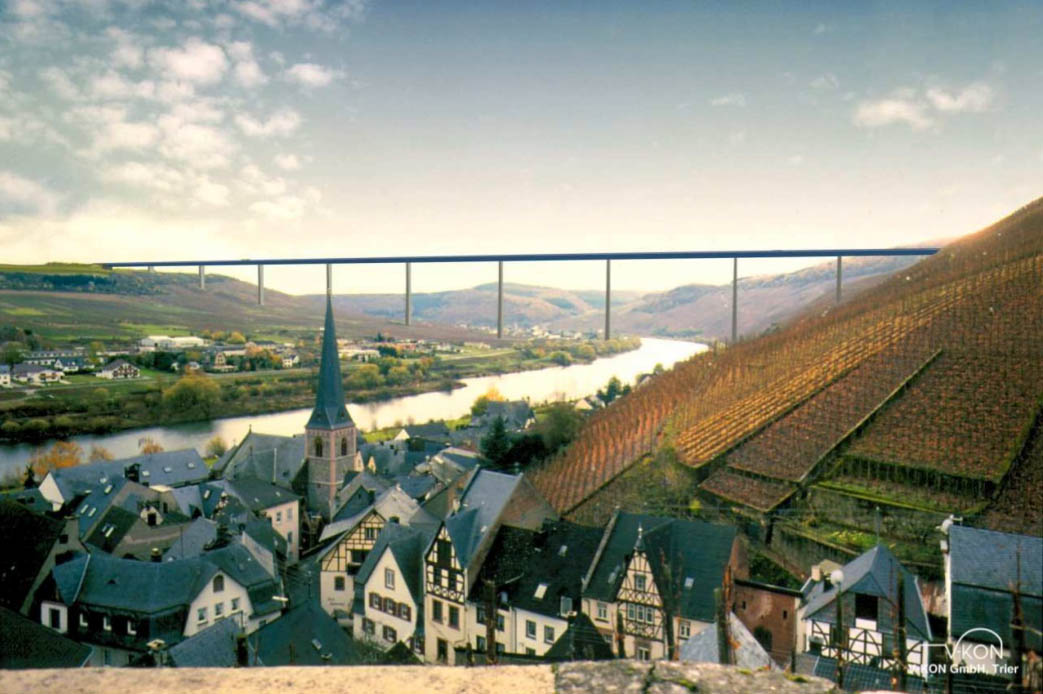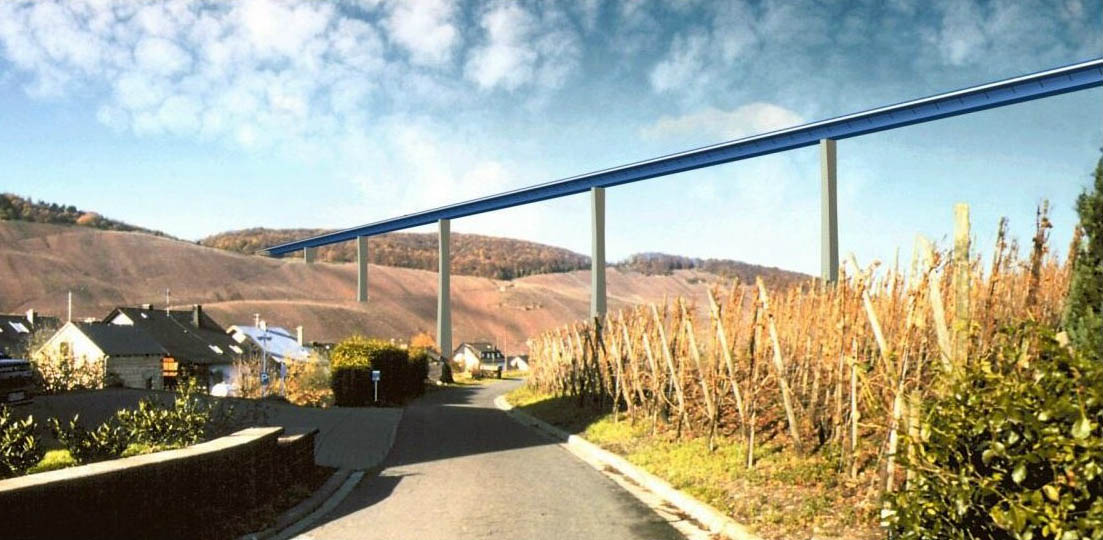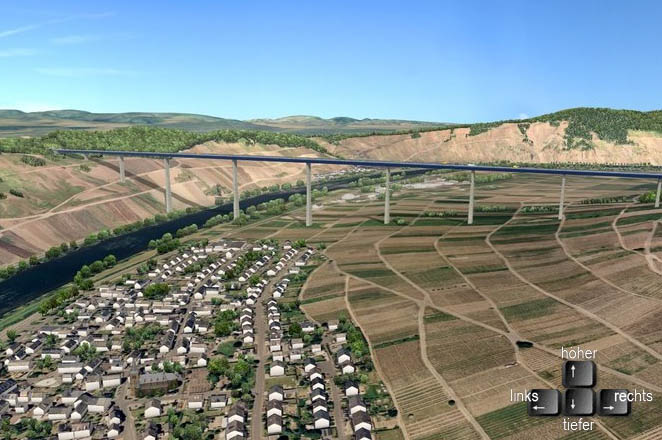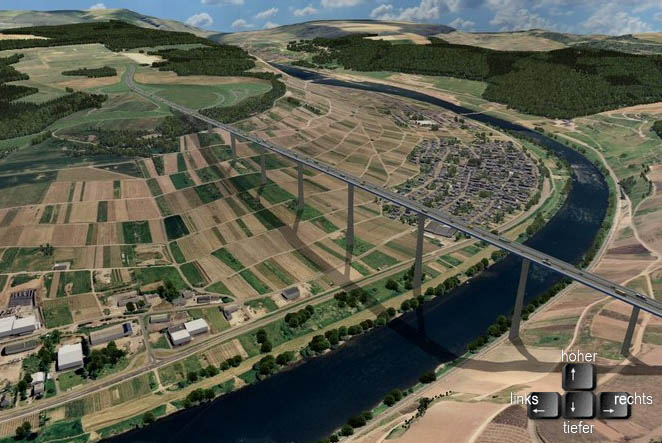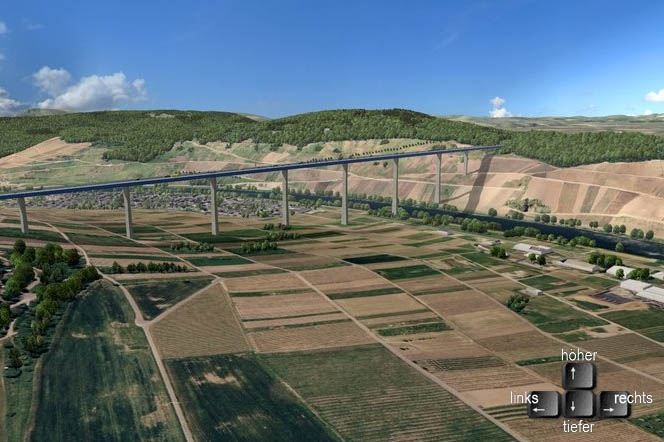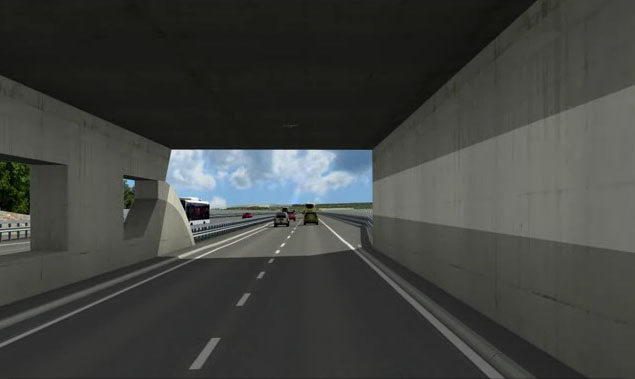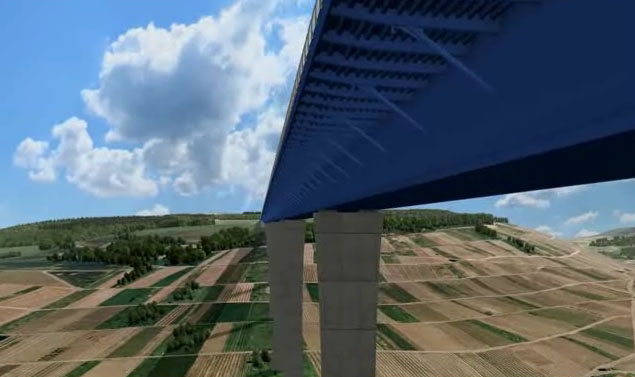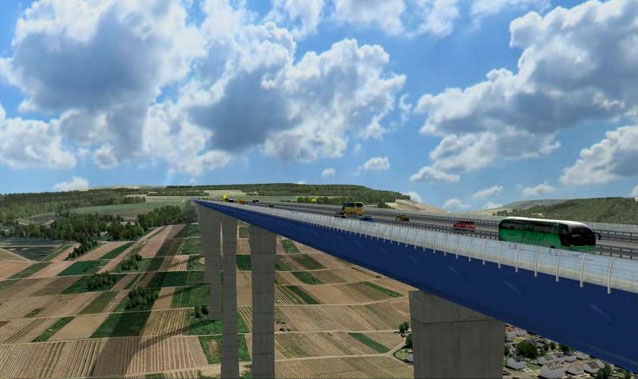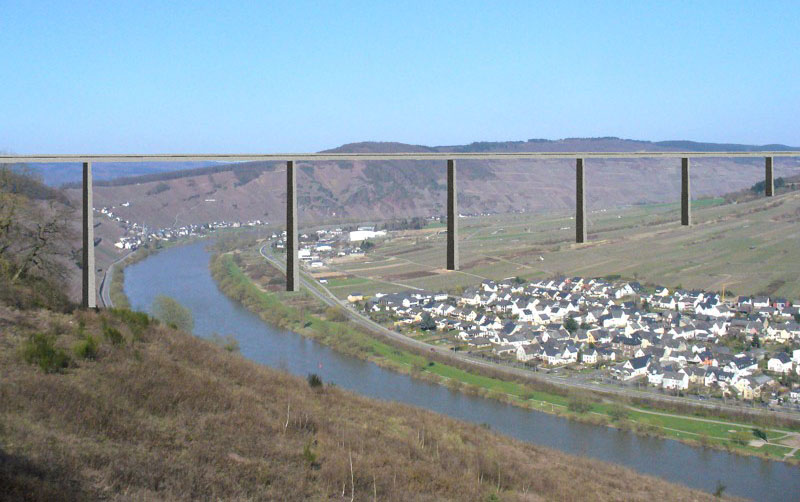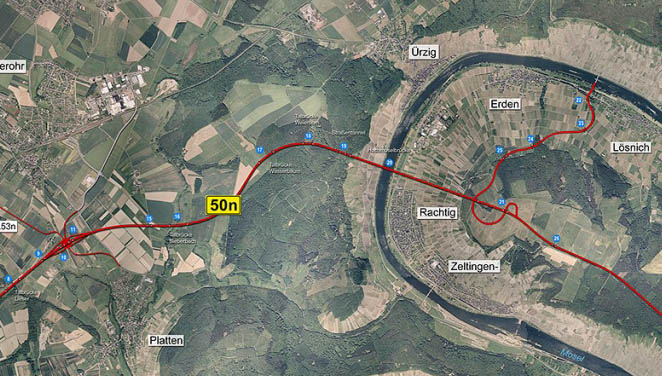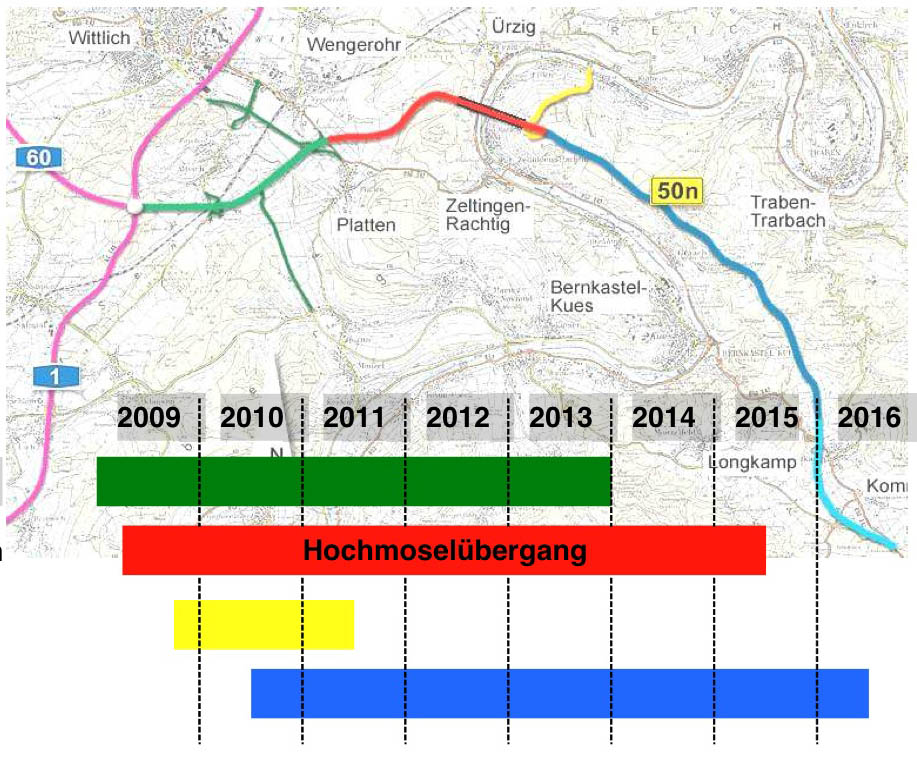Mosel High Bridge
Mosel High Bridge
Hochmoselbrücke
Zeltingen-Rachtig, Rhineland-Palatinate, Germany
518 feet high / 158 meters high
689 foot span / 210 meter span
2019
One of the most beautiful waterways in all of Europe, the Mosel River twists and turns for nearly 340 miles (545 kms) before joining the Rhine river at the city of Koblenz, Germany. For most of its length, the Mosel is flanked on both sides by steep slopes that are neatly manicured with a patchwork of vineyards and farms while the riverbanks are sprinkled with small towns and villages that look much as they did 100 years ago.
With an average depth of 500 feet (152 mtrs), the river valley has always been a formidable barrier to cross. It was not until 1972 when the first high crossing of the river was built near Winningen, Germany. Towering 450 feet (137 mtrs) above the Mosel, the 6-lane Bundesautobahn 61 highway bridge became renowned in the German civil engineering community for its spare, simple lines - made possible by a massive 28 foot (8.5 mtr) deep steel box beam “backbone” that includes a monstrous main span of 716 feet (218 mtr). This length is especially impressive when you consider the girder span has a slenderness ratio of just over 1:25. Moselbrücke Winningen remained the highest bridge in Germany until the Kochertal viaduct opened in 1979. The great German engineering firm of Leonhardt, Andrä and Partners was responsible for the design. Bridge engineer Fritz Leonhardt is one of the earliest and greatest pioneers of steel girder bridges and is the author of the famous book “Bridges / Brücken”. (see the list of 12 Best Bridge Books in the Introduction)
Located approximately 60 miles (97 kms) upstream of the Winningen bridge, Hochmoselüebergang has a height of 518 feet (158 mtrs) and a length of just over a mile (1,720 mtrs). Modeled after the earlier bridge, the new Hochmoselbrücke crossing near the towns of Zeltingen and Rachtig has a massive steel box beam carried across several large, monolithic towers. The main span is nearly as long as the Winningen bridge at 689 feet (210 mtrs). Currently, the A60 highway once ended at its junction with the A1 a mile west of the river valley. Controversy over the extension of the highway, from its 270 million Euro cost to its environmental effect on the region, have been an ongoing issue with vocal support and opposition in equal measure. Financing for the project was announced in late 2008.
With a direct corridor to Mainz and Frankfurt in the east, the new B50 motorway has become a great new addition for the German citizens of Zeltingen-Rachtig and the surrounding region.
You can go on a great 3D computer trip across the span on this video. The website also has a load of other information on the huge crossing. http://www.hochmoseluebergang.rlp.de/brueckenflug.html
A German news clip on the project can be seen here: http://www.youtube.com/watch?v=T36tkl474Hw&feature=related
Hochmoselbrücke Bridge computer illustration.
Hochmoselbrücke Bridge computer illustration.
Hochmoselbrücke Bridge computer illustration.
Hochmoselbrücke Bridge computer illustration.
Hochmoselbrücke Bridge computer illustration.
Hochmoselbrücke Bridge computer illustration.
Hochmoselbrücke Bridge computer illustration.
Hochmoselbrücke Bridge computer illustration.
Hochmoselbrücke Bridge computer illustration.
Hochmoselbrücke Bridge computer illustration.
Hochmoselbrücke area map.
Hochmoselbrücke construction schedule.
